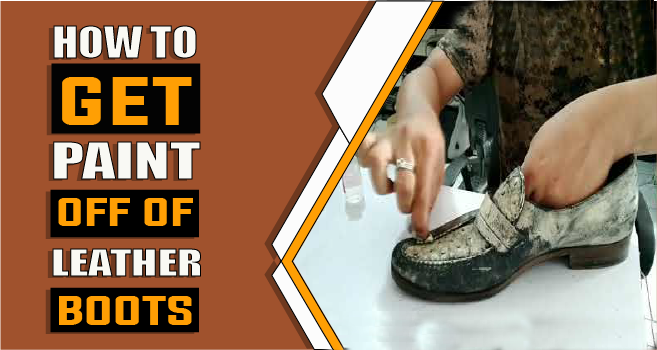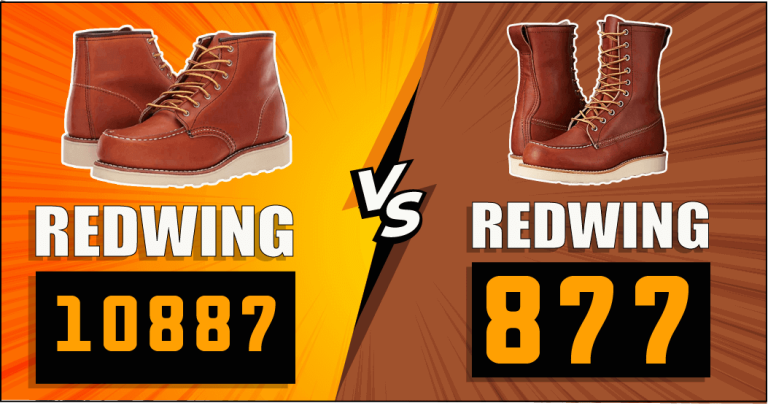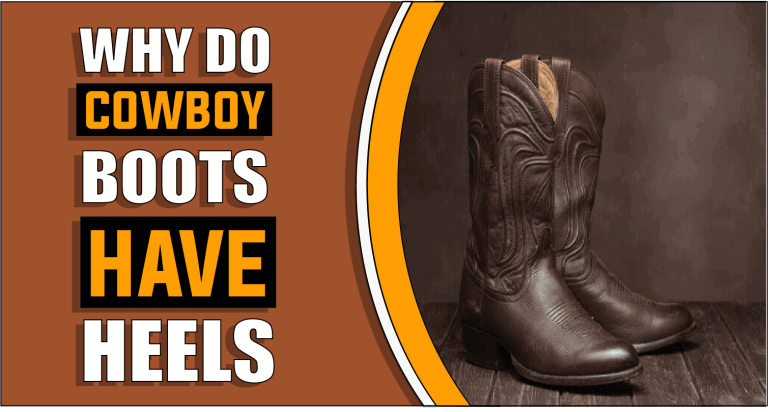Is Steel Shank The Same As Steel Toe – Know Before You Wear
Are you looking for a callous and ultimately reliable work boot? If so, you may have heard about steel shank work boots and wondered if they are the same as steel toe boots. We understand your confusion! The two terms are often used together, but they mean something very different regarding the type of footwear they offer. In this blog post, we’ll explore what these terms mean and how choosing one or both can affect your comfort and safety while wearing work boots. We aim to lay out the essential differences between steel shanks and steel toes – so you can make an informed decision about which type of boot best meets your needs. Ready to uncover all you need to know? Let’s dive right in, then!

What are steel shank and steel toe?
Steel shank and steel toe are safety features typically found in work boots. A steel shank is a rigid piece of metal that runs along the foot’s arch and provides rigidity and stability to the shoe’s sole. Steel toes are caps made from steel or other hard metals which protect the toes from heavy objects or hazards such as nails and sharp objects. They are often found in occupational safety shoes, boots and other footwear designed to protect workers from falling or rolling objects, electrical hazards, compression and other workplace dangers. Steel toe boots provide extreme protection for the most hazardous working conditions; however, many work environments can benefit from steel toe and shank safety features. Steel toe boots are also an essential part of personal protective equipment for many people who work in hazardous or potentially dangerous environments. By providing protective qualities, steel toes and shanks can help reduce the risk of foot injuries on the job.
Overall, a steel toe and steel shank are essential for providing adequate protection in many work environments. This type of safety boot should be considered part of any personal protective equipment selection process. Steel toes and shanks offer extra stability and protection to the feet, helping to reduce the risk of injury while on the job.
Is Steel Shank The Same As Steel Toe?
No, steel shank and steel toe are not the same. Steel toe shoes typically have a metal plate that wraps around the toes to protect them from potential harm. On the other hand, steel shanks are built into the sole of the shoe and provide structure and balance while walking or standing. The shank reinforces arch support and adds stability, making the shoe suitable for various activities. Steel shanks are usually made from steel or other metals and can offer more support than rubber or plastic midsoles, which is why they’re often found in work boots, heavy-duty hiking shoes, and even ski boots. Steel toes also protect compression and impact, but steel shanks offer better support for the foot. Steel toes are often required in certain professions to protect workers from hazards such as falling objects or machinery accidents. Steel shanks can also be beneficial for those who work on their feet for long periods, as they help prevent fatigue, which can lead to discomfort and injury. Ultimately, steel shanks and steel toes serve different purposes, but both are important for keeping feet safe in certain situations. When deciding which type of shoe is best for you, it’s essential to know what risks you may face in your line of work or activities. For example, steel toes are necessary for protection against hazardous materials and tools if you’re a construction worker. On the other hand, steel shanks will provide extra arch support and stability if you’re a hiker or skier. Knowing what type of shoe is best for your particular needs can help keep you safe and comfortable.
Steel Shank vs Steel Toe – Which is better for you?
Choosing a steel shank or steel toe can be difficult when selecting a work boot. Both offer unique benefits and drawbacks that must be carefully considered before making a final decision. The primary difference between the two is in their construction and design. Steel shank boots are made with a steel rod in the sole, which provides added support and stability when lifting or carrying heavy objects. Steel toe boots feature a protective steel toe cap that increases protection against crushing or impact injuries to the toes. There are other factors to consider when determining which type of boot is best for you. Steel shank boots provide increased support and stability when lifting heavy objects, making them ideal for jobs that require frequent lifting or carrying of heavy items, such as construction or warehouse work. The steel rod in the sole also helps to absorb shock from walking on hard surfaces, reducing foot fatigue.
Additionally, steel shank boots are typically lighter in weight than steel-toe boots, making them more accessible and comfortable to wear. On the other hand, steel-toe boots offer increased protection against impacts and crushing injuries to the toes from falling objects or heavy machinery. This type of boot is most often used in manufacturing settings where there is a risk of serious injury due to falling objects. Steel-toe boots are also heavier than steel-shank boots, making them more challenging to wear for long periods.
When choosing between steel shank vs steel toe boots, it is essential to consider your work environment and the types of activities you will be performing to determine which type of boot offers the most significant benefit. Steel shank boots offer increased stability and support, while steel toe boots provide additional protection against impacts. Ultimately, the decision should be based on your individual needs and preferences. Whatever type of boot you choose, it is essential to make sure it fits correctly to ensure maximum comfort and safety. By taking the time to consider your work environment and individual needs, you can make an informed decision about which type of boot is best for you. Steel shank boots offer increased stability and support, while steel toe boots provide additional protection against impacts. Whichever kind of boot you choose, it is essential to make sure that it fits correctly to ensure maximum comfort and safety. With these considerations in mind, you can decide which type of boot is best for you.
What are the benefits of wearing safety shoes?
Safety shoes are an essential part of personal protective equipment that protects workers from potential hazards in the workplace. They have been designed to reduce the risk of slips, trips, falls and injuries caused by sharp objects or heavy items. Safety shoes provide several benefits for those who wear them daily.
1: Safety Shoes Protect Your Feet Safety shoes are often made from leather and rubber, which provide better protection than regular shoe material. Not only do they protect your feet from sharp objects or heavy items, but they also help reduce the risk of slips and falls.
2: Safety Shoes Help Keep You Comfortable Safety shoes are designed to provide more comfort than regular shoes. They have added cushioning and support in critical areas that can help reduce foot fatigue and discomfort. Some safety shoes are specifically designed for specific industries, such as the medical or construction fields, to ensure maximum protection and comfort.
3: Safety Shoes Help You Stay on Your Feet Longer Safety shoes are highly durable, which helps keep you on your feet longer and boost productivity. Leather safety shoes usually have a higher wear resistance than synthetic materials so they can last longer. Additionally, the soles of these shoes are designed to be slip-resistant in wet and dry conditions.
4: Safety Shoes Help You Stay Focused Safety shoes help keep your feet comfortable, which can help you stay focused at work. Wearing the wrong type of footwear can lead to fatigue and discomfort that can cause distractions in the workplace. Safety shoes will make sure your feet are supported throughout your workday so that you can stay productive and motivated.
5: Safety Shoes Can Help You Avoid Injury Safety shoes are designed to protect your feet and ankles from potential workplace hazards. They can help you avoid cuts, scrapes, bruises and other injuries that sharp objects or heavy items could cause. Wearing the correct type of safety shoe can also reduce the risk of slips, trips and falls due to their slip-resistant soles.
By wearing safety shoes, workers can benefit from improved protection and comfort. Safety shoes are crucial for those who work in hazardous environments to help reduce the risk of injuries and ensure maximum productivity and focus. When it comes to workplace safety, investing in the correct type of safety shoe is essential.
How to choose the right safety shoes for your needs?
When choosing the right safety shoes for your needs, several considerations must be taken into account. The following tips can help ensure you get the best pair of shoes for your specific needs:
1. Identify Your Workplace Needs:
Safety shoes may be necessary due to the workplace conditions you will encounter. Specific workplaces may require more protective footwear due to slippery surfaces, sharp objects, or heavy machinery. Consider the environment you will work in and determine what type of shoes are ideal for that particular environment.
2. Know The Safety Ratings:
Safety ratings are important when it comes to selecting safety shoes. These ratings indicate how much protection the boots can provide in certain situations. Look for safety ratings from organizations such as ASTM International, which has established standards for safety footwear.
3. Comfort Is Key:
Your feet need to be comfortable while wearing your safety shoes, even after long hours of standing or walking on hard surfaces. Consider the materials used in the construction of the boots and features such as arch support and cushioning. Make sure the shoes fit correctly and do not cause any discomfort.
4. Look For Durability:
Safety shoes should withstand everyday wear and tear over a long period. Choose quality materials and construction that can stand up to heavy use. Look for water-resistant uppers, slip-resistant outsoles and reinforced toe caps.
5. Consider The Cost:
When it comes to safety shoes, you get what you pay for. Investing in a quality pair of shoes with all the necessary safety features may cost more than buying a cheaper pair, but it will last longer and provide better protection. Consider the cost of the shoes concerning their quality and features.
Considering these factors, you can find a pair of safety shoes that meets your needs and keeps you safe in any environment. Be sure to try on several different pairs before making your final decision – never settle for anything less than the perfect fit!
Relevant Questions:
Not all boots have a metal shank. Some shoes will instead feature an insole board made from a stiff material such as cardboard or nylon. This insole board provides the same support and stability as a metal shank but with less weight. Additionally, some brands use combinations of both materials for improved comfort and support. Therefore, the use of metal shanks in boots depends on the brand and style of the boot.
It is possible to add a shank to a boot. This can be done by having the sole of the boot cut and re-lasted with a steel or fibreglass shank inserted into the new sole. A professional shoe repair person best does the process for optimal performance and durability. Additionally, some brands offer boots with factory-installed shanks for extra support and stiffness.
A non-metallic shank is a metal-free wood screw, typically made of polyvinyl chloride (PVC), used in applications where traditional metal screws are unsuitable. Non-metallic shanks are highly resistant to corrosion and can be used in various temperatures and environments. They also offer excellent strength, durability and stability. As such, they are suitable for multiple applications, including decking, siding, HVAC and more. Non-metallic shanks can provide quick installation and adjustability with the benefit of being aesthetically pleasing. They are an excellent alternative to metal screws in many situations.
Generally, steel-toed boots will have a distinctive “steel cap” or covering over the toe area. Additionally, you should check the product information on the box or label for specific details about a boot’s features. It is important to choose boots that are safety certified and meet industry standards for impact protection.
Conclusion Paragraph
We hope you have found the answer to your question: is steel shank the same as steel toe? Steel shank and steel toe are both excellent materials for a work boot. Each has benefits that make it ideal for different situations. If you need a comfortable boot that can withstand heavy wear, steel toe is the way to go. A steel shank is the better choice if you need a lightweight boot with good ankle support.
Ella John created BootsSolution.com with the vision of helping people to find the perfect boots for any occasion. As an expert in the field of footwear, she has created a comprehensive guide to finding the perfect boots. With her BA (Hons) in Footwear Design from De Montfort University, UK, Ella John has been writing about boots for several years. On BootsSolution.com you can find helpful information about the latest trends, tips for taking care of your boots, and advice on how to choose the right pair. Ella’s mission is to provide her readers with the best possible advice and help make sure that everyone can look their best in a perfect pair of boots. So if you’re looking for the information and inspiration you need to find the perfect boots, look no further than BootsSolution.com.






